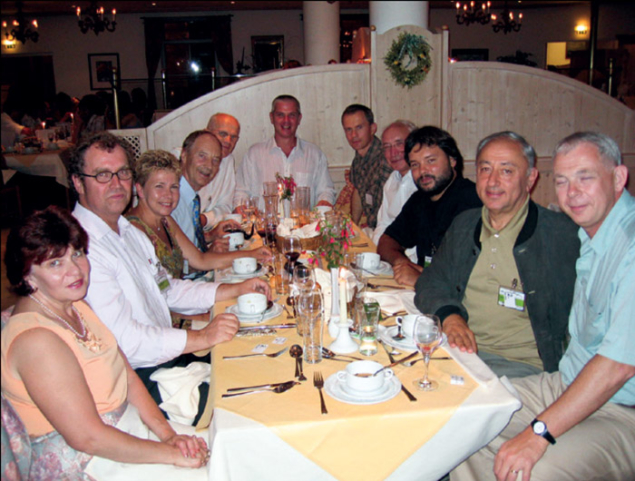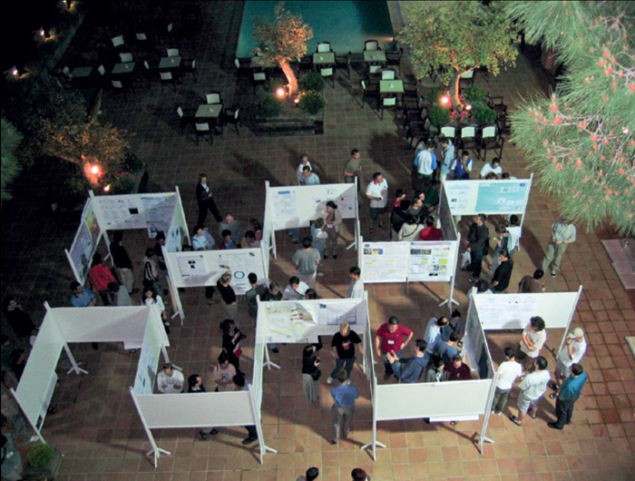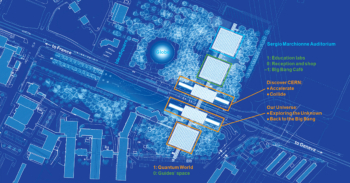In 1993, a new series of physics schools began in Europe. Organized jointly by CERN and JINR, they have inspired similar ventures in Latin America and Asia.sics.

The original CERN Schools of High-Energy Physics were established in the early 1960s at the initiative of Owen Lock, who played a leading role in their development over the next three decades. The first schools in 1962 and 1963 were one-week events organized at St Cergue in Switzerland, near CERN. However, from 1964 onwards the annual events – by then lasting two weeks – took place in other countries, generally in member states of CERN.
Starting in 1970, every second school was organized jointly with the Joint Institute for Nuclear Research (JINR), CERN’s sister organization in the Soviet Union. This collaboration between East and West, even during the Cold War, exemplified how a common interest in science could bring together people from different nations working in harmony with the common goal of advancing human knowledge.
With the changes in the political scene in Europe, and after discussions and an exchange of letters in 1991 between the directors-general of CERN and of JINR, it was agreed that future schools would be organized jointly every year and that the title should change to the European School of High-Energy Physics. In each four-year period, three schools would take place in a CERN member state and the fourth in a JINR member state.
In 1993, the first European School took place in Poland, a country that was a member both of CERN and JINR. The following three schools were held in Italy, Russia and France, with the event in Russia being considered the first to be organized in a JINR member state. The full list of host countries for the first 20 European Schools is shown in the box (overleaf). With the new schools series, Egil Lillestøl replaced Owen Lock as the director of the CERN Schools of Physics, continuing in this role until the 2009 event in Germany, after which he handed over responsibility to the current director, Nick Ellis.
Theory and phenomenology
The target audience for the European Schools is students in experimental high-energy physics who are in the final years of working towards their PhDs. Most of the courses teach theory and phenomenology, concentrating on the physics concepts rather than the details of calculations. This training is highly relevant for the students who will use it in interpreting the results of physics-data analysis, e.g. as they complete the work for their PhD theses. Even if experimental physicists do not usually perform advanced theory calculations, it is of great importance that they can follow and appreciate the published work of their theory colleagues and also have the necessary background to discuss the phenomenology. This last aspect is addressed particularly through the discussion sessions at the schools.
The scientific programme of the European Schools consists of typically four and a half hours of lectures each day (three lectures, each 90 minutes in duration, including questions), complemented by discussion sessions in groups of about 15–20 students with a discussion leader. The programme includes a poster session where many of the students present their own research work to the other participants, including the teachers and organizers. This way, students get to discuss their own work with some of the leading experts in the field.
A new development in the programme since the 2011 school is the inclusion of projects in which the students from each discussion group collaborate as a team to study in detail an experimental data analysis. With this, on top of the rest of the programme, the students say that they have to work really hard; nevertheless they still seem to enjoy the schools a great deal.
The focus of the schools is mainly on subjects closely related to experimental high-energy physics, so there are always core courses on topics such as field theory and the electroweak Standard Model, quantum chromodynamics, flavour physics and CP violation, neutrino physics, heavy-ion physics and physics beyond the Standard Model. Since 2009 there have also been lectures on practical statistics for particle physicists, which are particularly relevant to the day-to-day work of many of the students.

The core courses are complemented by some more topical lectures, including in recent years the latest results from the LHC and their implications. The programme generally also includes lectures related to cosmology, given the important interplay with particle physics, e.g. in connection with dark matter. Last but not least, the directors-general of CERN and JINR often attend in person and give lectures on the scientific programmes of their respective organizations and their outlook for the coming years; this also gives them an opportunity to meet and discuss informally with some of the most promising young physicists in the field.
The scientific programme, including the choice of subjects to be covered and the selection of the lecturers and discussion leaders who will teach at the school, is decided by a small international organizing committee with representatives from CERN and JINR, together with the person from the host country who will serve as the local director for the school. The same body is in charge of selecting the students who will attend the school, based on the applications and letters of recommendation from the professors or supervisors of the candidates.

Beyond the purely scientific objectives of the schools, the organizers aim to foster cultural exchange and “networking” between participants from different countries and regions. For this reason the students are assigned to shared twin-room accommodation, mixing people from different countries and regions. Similarly, the discussion groups are chosen to have a good mix of nationalities.
The collaborative student projects that were introduced in 2011 go beyond learning about a specific data analysis. Each group of students, with a little assistance from their discussion leader, has to select a published paper describing the analysis that they are to study; they then have to organize themselves to share the work with different individuals or sub-groups addressing distinct aspects of the analysis; they have to work as a team to prepare and rehearse a short talk summarizing what they have learnt; and they have to select a speaker to represent them. All of these skills are important for young physicists working in large international collaborations such as those that run the LHC experiments.
Geographical enlargement
The European Schools have served as a model for similar series that are now organized in other parts of the world. Since 2001 there have been schools every two years in Latin America, catering for the growing high-energy-physics community there. The most recent event was held on 6–19 March this year in Arequipa, Peru.
A second new series of schools – the Asia-Europe-Pacific School of High-Energy Physics – started last year. The first event was held in Japan and the next one is planned for India in 2014. As with the Latin-American Schools, these events will be held every second year, with a programme that is similar to the model of the European Schools.
Thus, the European Schools have inspired other series catering for the needs of young physicists in other parts of the world. This is part of CERN’s policy of geographical enlargement and its mission to support scientists from other parts of the world to increase their participation in high-energy physics in general and their collaboration with CERN in particular.
The European Schools continue to attract a large number of applications from highly qualified candidates, despite the emergence of many other excellent schools that offer alternative training. For example, the 2013 school, which takes place on 5–18 June in Hungary, was oversubscribed by more than a factor of two compared with the target of around 100 students. This implies a rigorous and highly competitive selection process, focusing on students with the most promise for an outstanding career in high-energy physics and who are at the optimum stage in their studies to benefit from the school.

Critical to the success of the schools are the lecturers and discussion leaders who teach there, selected for their qualities as first-class researchers and also as teachers. They come from institutes in many countries, including ones that are not member states of either CERN or JINR. The European Schools have benefited from the strong support, and often the presence as lecturers, of successive directors-general of both CERN and JINR. The organizers are extremely grateful to the many people from the worldwide high-energy-physics community who every year contribute to the success of the schools, a success that can be judged from the positive feedback received from the students who participate.
Host countries of European Schools
1993 Zakopane, Poland
1994 Sorrento, Italy
1995 Dubna, Russia
1996 Carry-le-Rouet, France
1997 Menstrup, Denmark
1998 St Andrews, United Kingdom
1999 Ĉastá-Papierniĉka, Slovakia
2000 Caramulo, Portugal
2001 Beatenberg, Switzerland
2002 Pylos, Greece
2003 Tsakhkadzor, Armenia
2004 Sant Feliu de Guíxols, Spain
2005 Kitzbühel, Austria
2006 Aronsborg, Sweden
2007 Trˇešt’, Czech Republic
2008 Herbeumont-sur Semois, Belgium
2009 Bautzen, Germany
2010 Raasepori, Finland
2011 Cheile Gradistei, Romania
2012 Anjou, France
2013 Parádfürdö, Hungary





